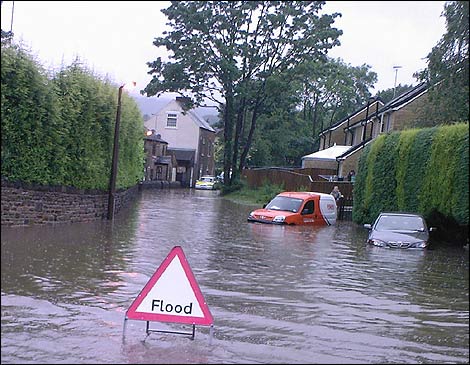- Delivering SuDS
- Using SuDS
- Background
- SuDS principles
- Benefits of SuDS
- Benefits of SuDS
- Why developers should choose SuDS
- Flood risk management
- Water quality management
- Biodiversity & ecology
- Amenity
- Air quality
- Building temperature
- Carbon reduction and sequestration
- Crime
- Economic growth
- Enabling development
- Flexible infrastructure/climate change adaptation
- Education
- Groundwater recharge
- Health and well being
- Pumping wastewater
- Rainwater harvesting
- Recreation
- Tourism
- Traffic calming
- Treating wastewater
- SuDS components
- SuDS components overview
- Source control
- Swales & conveyance channels
- Filtration
- Infiltration
- Retention & detention
- Wetlands
- Inlets, outlets and control structures
- SuDS performance & monitoring
- Delivery
- The costs & benefits of SuDS
- Adoption & maintenance of SuDS
- Legislation & regulation
- Design guidance
- Retrofitting SuDS
- Drainage exceedance
Flood risk management benefits
SuDS are designed to meet specific objectives and design criteria, much the same way as traditional drainage systems. SuDS components are generally volume based whereas pipe design is usually focused on conveyance.
The majority of SuDS components provide larger storage volumes than traditional drainage systems. Therefore, these systems will only become overloaded by events occurring over a longer duration, which generally means that “failure” results in less impact. With the majority of SuDS components managing water on the surface this increased visibility and attention to flood routes may also contribute to improved flood risk management, particularly during extreme rainfall.
In addition to the type of failure being very different, SuDS schemes retain and attenuate runoff for longer, while pipe based systems pass all this flow downstream. This means that areas downstream at risk of flooding receive all the water from an upstream pipe based system, but only a limited amount of water from a SuDS scheme.
Flood risk is managed by SuDS reducing the volume, frequency and flow rate of surface water runoff and during extreme events. Exceedance can be managed, with components and schemes "failing gracefully" and in many circumstances they can be visually monitored.

Read more on:



